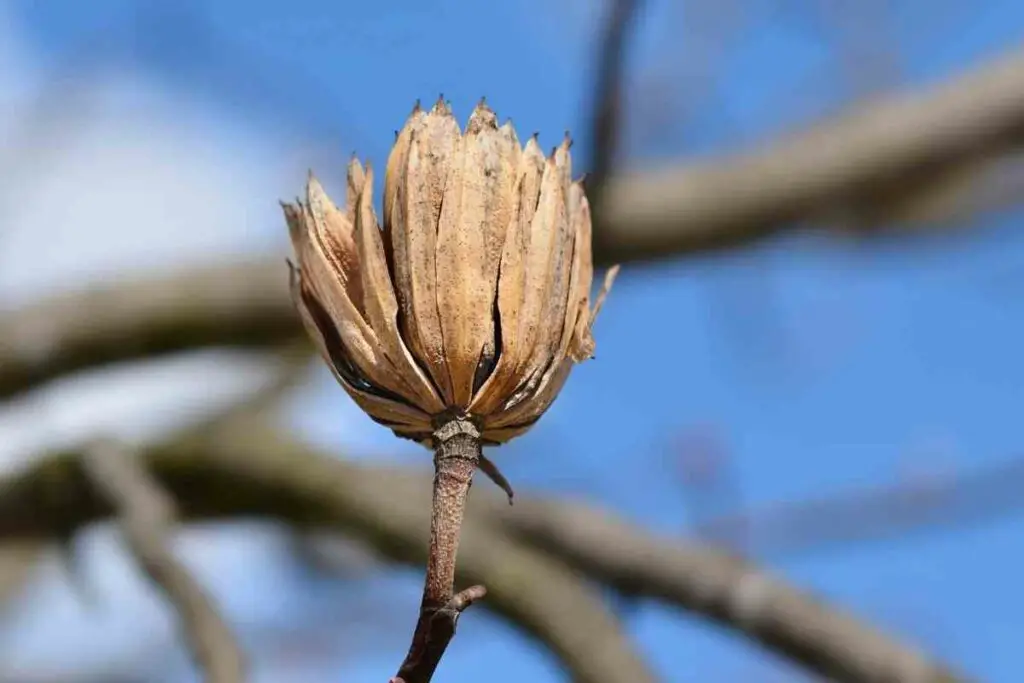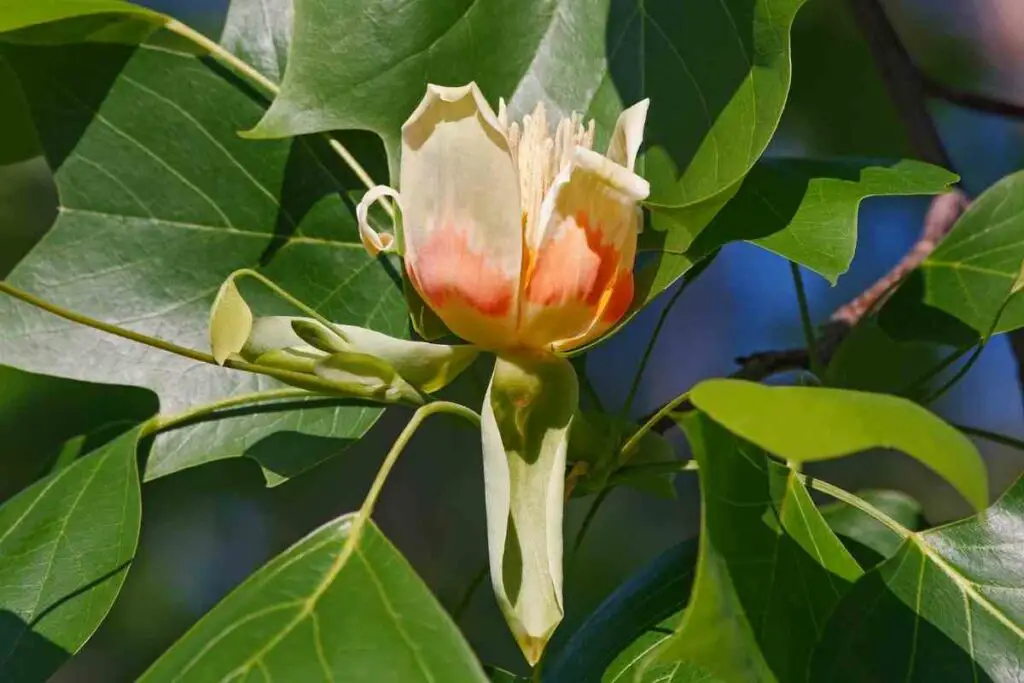Tulip trees and poplars are natural beauties and stand out in every garden. Sometimes the trees can look discolored, scaley, and a white substance forming around the tree, these may be early signs of the tree dying, and catching the signs early give us more chances to save it. So how do you catch the signs early?
Table of Contents
Why Is the Stems or Bark Discolored?
You may notice something wrong with your tree due to a lack of leaves, or smaller leaves than usual. If you suspect there may be something wrong with your tulip poplar tree you should peel back the bark to check for a disease known as Armillaria root rot.
This disease occurs when the ground is too wet, and the roots become waterlogged. When you peel back the bark, you’ll notice dark lines up and down the trunk of the tree. If your tree is a young sapling, the stem may become darker with black patches.
More mature trees that are suffering from Armillaria root rot may also display a white substance growing inside the bark. If you leave your tulip polar in this condition, you will cause the roots to rot completely, thus hindering their ability to provide water and nutrients to the rest of the tree.
To prevent further damage, avoid watering the ground of the tree as much as possible. If you can, try to move the tree to a dryer environment. Armillaria root rot will not persist in dry environments.

Why is My Tulip Poplar Leaves Beginning to Wilt?
Wilting leaves may be a sign of underwatering or more serious diseases. If you notice that the leaves of your tulip poplar are starting to wilt, try giving the tree more water. If this does not work, then there is a big chance your tree is in the early stages of Verticillium Wilt.
Later signs of Verticillium Wilt include individual branches of the tree dying due to a lack of nutrients. The disease is a fungal one that attacks the roots directly.
In most cases, Verticillium Wilt leads to the death of the tree. Experts say that there are no effective cures for this tree disease. If you keep multiple tulip poplars, you may want to consider removing the affected tree completely to prevent Verticillium Wilt disease from spreading to your other plants.
Why is There Fungal Growth at the Base of the Tree, Leaves, and Fruits?
If you notice mushrooms or moss growing at the base of the tee, this may be another sign of Armillaria root rot or Verticillium Wilt. These diseases both attack the roots of the tree and thrive in moist environments, therefore it’s likely that the roots of the tree have become infected when fungus begins to grow on the outside.
You’ll be able to confirm diseases such as Verticillium Wilt if the leaves of your tulip poplar begin to discolor or fade.
If your tree has become infected by Armillaria root rot, you’ll also notice a kind of white growth appear on the leaves that resemble a white sticky powder. These are fungal spores and will eventually spread all over the leaves and fruits.

Why Does My Tulip Poplar Have ‘Scales’?
Some tulip poplar owners mistake aphids, a common pest, for new leaf shoots. Tulip tree aphids can suck the nutrients out of the bark of the tulip poplar. The aphids and scales can look like new growth on the tree because they are green.
Aphids come in shades of pink, orange, and green so you can also mistake them for new growth. If you catch an aphid infestation early, experts say you can treat it with readily available products.
While the intake of nutrients from the tree is not necessarily an issue, aphids and scales make a sweet substance called honeydew. This drips onto the leaves and branches and causes mold. This mold makes the tulip poplar more susceptible to fungal infection and may lead to your tree dying if left untreated.
What Does it Mean When Your Tulip Poplar Is Dripping Sap?
Like we’ve mentioned above, this sap is not made by your tulip poplar tree! The sap is the honeydew created by the aphids and scales that have infested the tree. If you notice the sap, then there is every chance that your tulip poplar is overly infested with aphids or scales.
Too much sap can lead to mold growing on the bark of the trunk. If the mold spreads, it increases the chances of the tree contracting ore severe fungal diseases that attack the roots. It’s best to treat tulip tree pests as soon as you notice them. Getting rid of the pests early will also prevent an infestation of your whole garden.













